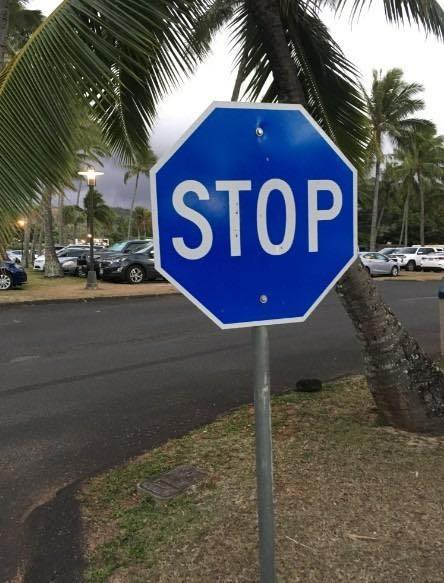ADVERTISEMENT
### Should I Stop for a Blue Stop Sign?
If you come across a **blue stop sign**, it’s essential to be cautious and consider the context of the sign:
– If it looks like a regular stop sign but the color is blue, it might still have the same meaning as the traditional red stop sign. Be sure to stop at the intersection and check for cross traffic as you would for a red stop sign.
– If the sign appears to have an additional label or a different shape, it could be a special-purpose sign. For example, some blue signs could indicate parking or loading zones, especially in areas that are marked with parking restrictions.
In short, **blue stop signs** aren’t part of traditional traffic rules, and it’s best to treat them with caution, just in case they represent something different from the standard stop sign. Always prioritize safety and follow your instincts if you’re unsure. If it’s in a public area or municipality, it’s a good idea to report it to the local authorities to ensure that the sign is functioning properly and isn’t confusing drivers.
### Why Is Color So Important in Traffic Signs?
The use of color in traffic signs plays a vital role in road safety. Colors are strategically chosen to convey different messages and elicit immediate responses from drivers. Here’s a breakdown of some common colors used in road signs and what they typically signify:
– **Red**: Red is used for warning and danger signs (such as stop signs) because it is highly visible and evokes urgency.
– **Yellow**: Yellow is used for cautionary signs, such as yield signs or construction zone warnings. It’s bright and attention-grabbing.
– **Green**: Green is typically used for informational or direction signs, indicating that there are no immediate hazards and that the driver should proceed with caution.
– **Blue**: Blue is often used to indicate information about services or to provide directions for services, such as hospitals or rest stops.
– **Orange**: Orange is used for temporary or construction-related signs, alerting drivers to potential hazards.
As you can see, the color of a stop sign (traditionally red) is deliberate in creating an immediate sense of urgency, while blue, which is less associated with danger, is often reserved for informative purposes.
For Complete Cooking STEPS Please Head On Over To Next Page Or Open button (>) and don’t forget to SHARE with your Facebook friends
